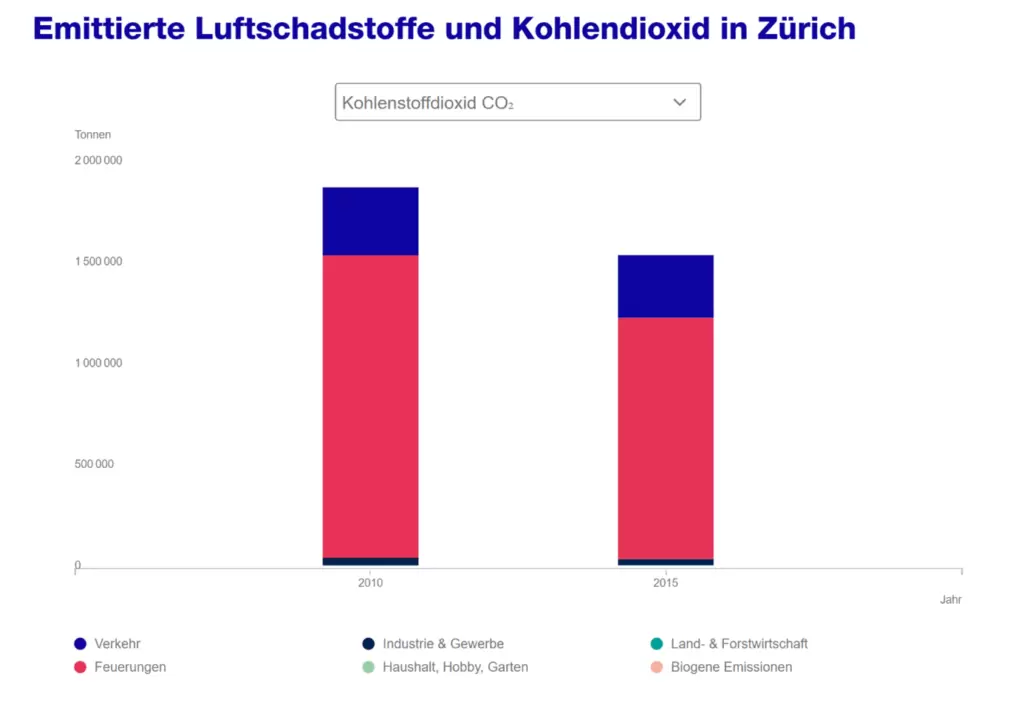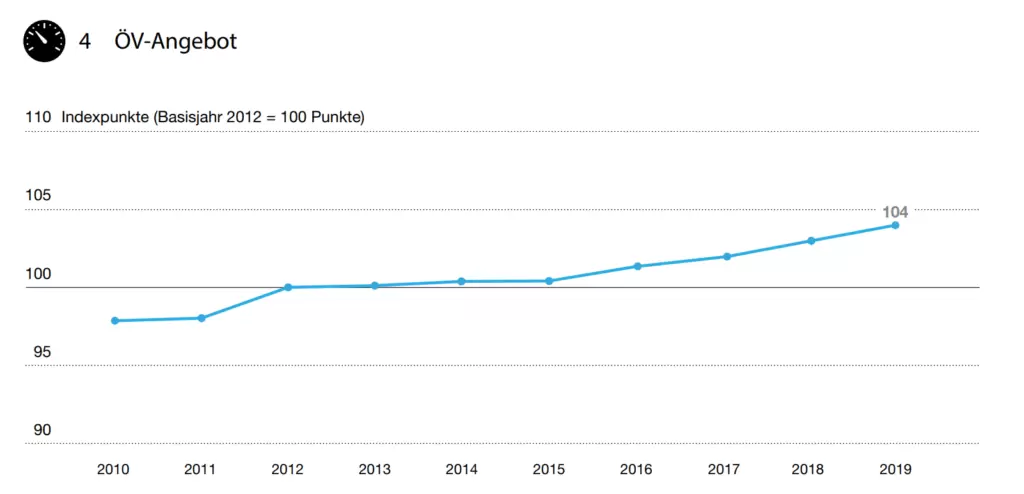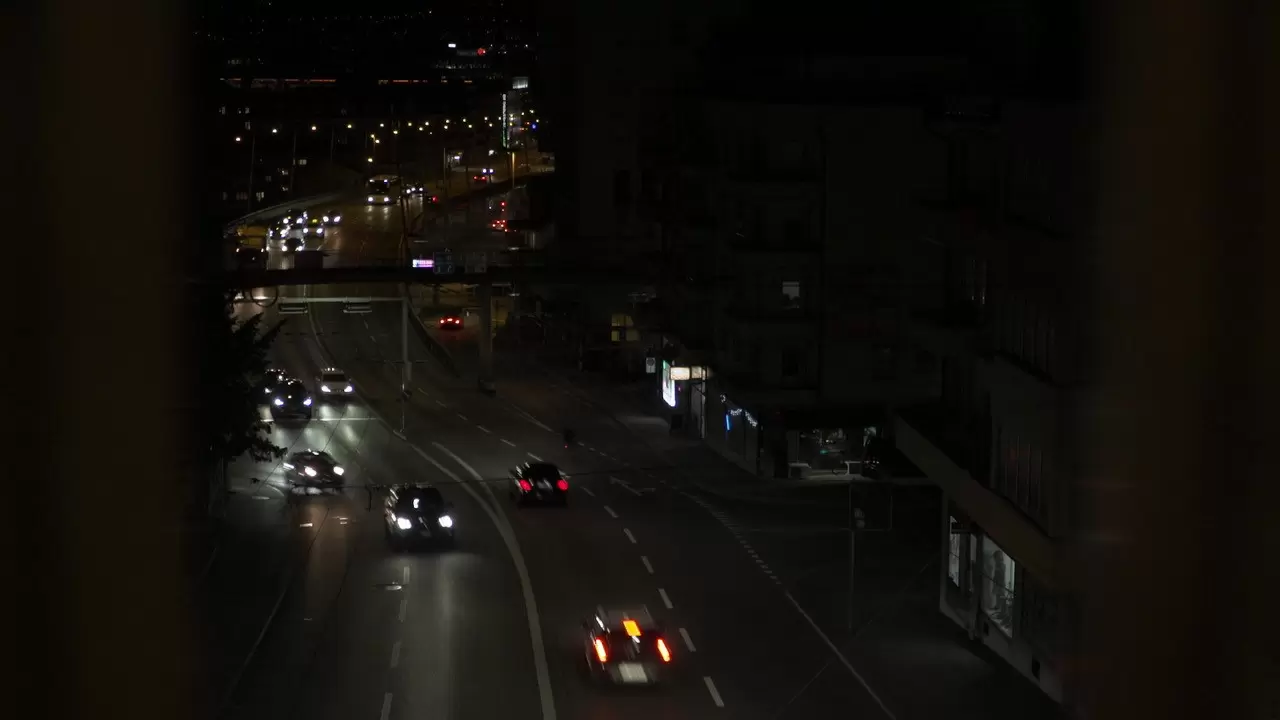Introduction
The idea for this project is to look more deeply into the issue to find out what can be done about the reduction of CO2 in the city of Zurich and where the strengths and weaknesses of the different variations are. The city is as quiet as possible and without many vehicles. So that the CO2 emissions can be reduced very much. I hope that the city will become car-free. This would be ideal not only for the climate but also for the well-being of the residents. With this measure, climate change could be drastically slowed down.
My vision: The city is quiet, only electric trams and buses drive through the streets. The electricity that is needed is obtained from sustainable sources. In other words, from solar panels mounted on the roofs of houses. People who come into the city by car have to park them in large carparks outside the city, these would be covered. The roof of the carparks also would be full of solar panels. The public transport network is well developed so that there are no restrictions for you to get anywhere.
Urban transport accounts up to 70% of global CO2 emissions. It is therefore not surprising that many cities are making great efforts to reduce the CO2 balance in their cities. The city of Zurich is no exception. They have set themselves the goal of net CO2 neutral by 2030. As you can see from the diagram below, traffic is a major contributor to the CO2 development in the city of Zurich.

I created a survey to see if society is at all willing to visit the city without a car. And as you can see from the graph below, more than half of all respondents think that traffic in the city should be minimised.

Main Part
I worked out four different solution scenarios. These are:
- a car-free district or only vehicles with certain requirements
- minimising parking
- lowering the speed limit
- promote alternative means of transport
To find out which of these options makes the most sense, I contacted the responsible department environment questions. I also contacted the organization “Umverkehr” for a second opinion.
Car-free zone or minimized admission
The number of vehicles in the city is minimized. This means that only vehicles with certain requirements will be allowed into the city.
This has the advantage that the city is free or has less CO2 and it is also quieter due to no traffic.
Before I contacted the experts, I thought this was the best way to keep traffic out of the city.
However, both experts had a different opinion. Mr. Christian Huber from the Department of Environment in Zurich said the following,
It would certainly make sense, but at the moment there is no legal basis for a driving ban or for an environmental zone. The city can not decide on its own. The competence lies with the federal government and the canton.
Mr. Daniel Costantino of the organization Umverkehr said the following.
I am not a fan of bans but sometimes there is no other way. I think it’s much more important to build car-free neighborhoods. And increasing the availability of public transport.
Minimising parking
The idea is to reduce the supply of parking spaces. This way, people would visit the city without a car and the search of a perfect parking space would also decrease considerably.
Again, both my experts see this as a very effective solution. Which is already being applied. The parking ticket price is also an effective way to get cars out of the city.
This has already been done for a long time. Restricting the parking supply and management (parking fees) are effective measures that have proven their worth. (Christian Huber)
The following figure shows how the park offer has developed in recent times.

lowering the speed limit
My idea was to lower the speed limit in the city. So I hoped that people would no longer want to come into the city as al result of the reduced speed limits. I also thought that it would have a good side effect, which would be that the city would also become quieter.
The two experts did not see it that way. They agreed with me that this measure is very effective for fighting noise, but not for reducing CO2 levels.
Lowering the speed limit has many advantages, especially in terms of safety and prevention.
As a means of reducing traffic, I find it suitable for only a limited extent. (Daniel Costantino)
Promote alternative means of transport
Here my thought was, the more educational advertising we giv the people the more they would consider public transport, because they see how many offers there are available. So people can move freely through the city. Even without CO2 emissions and without the stress of finding a suitable parking space or paying a lot for a parking ticket. This includes public transport, rental bikes, e-scooters and e-motorbikes.
I think it is better to build car-free settlements, to reduce the number of parking spaces, to offer a good and safe bicycle infrastructure, to offer good public transport, to promote car sharing and car pooling. (Daniel Costantino)
Also from the 2019 report “Stadtverkehr 2025”, as shown in the figure below, the public transport network has already been significantly expand compared to previous years.

In conclusion
It is already clear today that cities make a very large contribution to CO2 pollution on our planet. In this context, it is time to address this issue.
In an overview of all these points that have to be taken into account, whether it is a legal basis or other regulations. It has become clear that certainly not only one of these measures can contribute to minimising CO2 emissions. It is always a combination of many or at least a couple of measures together. One measure alone will hardly be enough to achieve any significant success.
I hope that soon all these obstacles will be removed and the city will be freer from vehicles so that CO2 emissions can be greatly reduced for the benefit of all people.
A big thank you to my two experts Christian Huber from the Department of Environment Zurich and Daniel Costantino from the organization “Umverkehr” for the time they took to answer my questions.
written by David Koller
Sources
[1] Air emissions register of the city of Zurich (stadt-zuerich.ch)
[2] The results of the survey [PDF] (produced by David Koller)
[3] Report 2019 “Stadtverkehr 2025” (stadt-zuerich.ch)
Interview with Christian Huber [PDF] (Department of the Environment Zurich)
Interview with Daniel Costantino [PDF] (Organization Umverkehr)
On-topic posts on dontwastemy.energy
Zurich city without fuel-powered cars
☷ See the project teams here »
☵ Some words about the contributions »
☴ Our sponsors and partners » (the-horse.education)

It was really nice with all the graphics, well done!
Very interesting content, well researched, cool suggestions for improvement. Will recommend it further.
Hello David
Wow! What an interesting and well-structured Post. The photo you took yourself looks great. It gives it a nice personal touch. The Diagrams you used are easy to read and are arranged clearly. The Information includes different opinions and aspects with lots of diversity. Good job.
Great work! This is a very important topic, which is clearly underrated. I really liked reading it! 🙂